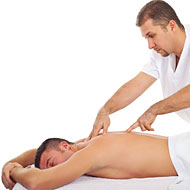How To Become a Registered Massage Therapist
Massage therapy has been gaining a lot of popularity in the last few years. There are many people who seek alternate therapies for chronic ailments, especially those that are pain related. With the increasing popularity of massage, even the people who choose to become massage therapists have been increasing.
Many people are turning to massage therapy as a career because it is very lucrative but is it easy to become a massage therapist? Let’s look at all the steps on how to become a massage therapist.
Education Requirement
Most states in the United States of America have a set of rules in order to qualify to become a licensed or a registered massage therapist.
Most states require that you study massage therapy at an educational institution. This education can be from a private or public school based on the state regulations. A basic high school diploma is adequate to get admission for a detailed course on massage therapy.
This education needs to include some basic subjects including anatomy, massage therapy, massage techniques, ethics, kinesiology or the study of human movements and even some degree of business management and administration. Along with the content of the course, there is even a requirement of about 500 hours of lectures and clinical duties put together.
Depending on your availability and convenience, you might not always choose a full time training course. Often colleges and universities offer part time or even online curriculum to allow more people to take the course. Depending on what time frame you have available, you can choose any option. As long as the option you choose fulfils the mandatory requirements in the state where you would like to practice, any option will work.
Certification Tests
Once you complete the regulatory requirement for education in massage therapy, a certification and registration will be required. Currently 43 states in USA require licensing and registration. You can find a list about which states require a license and registration online. There is even a National Certification Board for Therapeutic Massage and Bodywork but this certification is not a statutory requirement.
Often certified therapists and licensed therapists are interchangeably used. Certified therapists get a certification for their level of skill while licensed therapists have fulfilled the other requirements put down by the state to become a massage therapist. It’s important that you aim to become a licensed or a registered therapist.
Career Path
Once you have gotten your education and certification along with a license (if needed), you are ready to start your career as a massage therapist. So far all you have done is gather the necessary skills to be a massage therapist. Now you need to develop your practice so that you become a successful massage therapist.
In order to do that, you can either start off by taking a job in a spa or at a massage parlour. You could also attempt to develop your own private practice. You would need to use skills like networking and other basic business management skills, in order to slowly develop your base of clients. In this career path, it becomes very important to have an updated skill set. When you become a registered massage therapist or a licensed massage therapist, you need to also validate your competencies. These competencies need to be updated and you need to be certified accordingly. As your practice thrives, you should also remember to learn new competencies, so that you can offer better and improved skills to your clients.
The trick to having a successful practice is to be sincere, warm and efficient. Local tie ups are important and look into private clinics for service partnership. Word of mouth publicity is also very important.
Read more articles from the General Discussion Category.
 Find Pose
Find Pose

